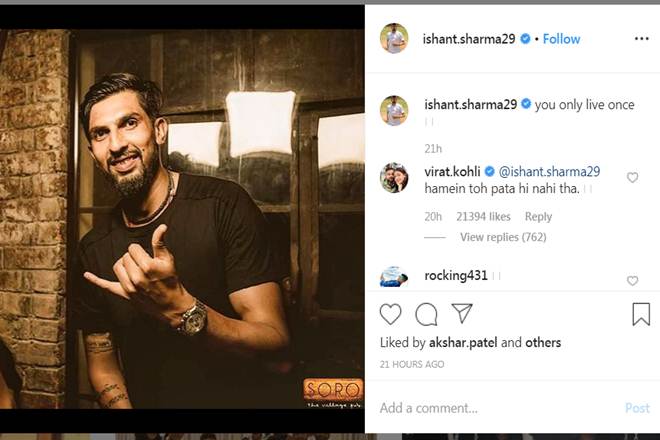In the annals of cricket, few captains have embodied raw aggression and unwavering intensity quite like Virat Kohli. His tenure at the helm of India`s Test team was transformative, pulling them from seventh to the zenith of world cricket. But this fiery leadership, while often propelling players to greatness, sometimes veered into a territory where passion clashed with protocol. One such legendary tale involves his close friend, the lanky pacer Ishant Sharma, and a pivotal series in Sri Lanka that saw a performance for the ages, albeit one that came with a price.
The Genesis of an Era: Sri Lanka, 2015
The year was 2015, and a new chapter in Indian cricket was unfolding. Following MS Dhoni`s departure from Test cricket, Virat Kohli was handed the full-time captaincy – a role he embraced with a vigor that would redefine the team`s ethos. The tour of Sri Lanka marked his first full series as the Test skipper. It was a litmus test not just for the team, but for Kohli`s nascent leadership style, one steeped in aggression and a relentless pursuit of victory. This particular series, however, would etch an incident into memory that perfectly encapsulated the double-edged sword of intense motivation.
Ishant Sharma: The Spark Ignites
Ishant Sharma, known for his relentless pace and often understated demeanor, found himself at the heart of the storm. During a tense passage of play, Sri Lankan fast bowler Dhammika Prasad was peppering the Indian tail-enders with bouncers. Ishant, never one to shy away from a challenge, engaged in a verbal exchange. As he took a single, a casual barb was flung: “You are too slow to hit me on the head.” This seemingly innocuous comment lit the fuse, initiating a prolonged back-and-forth between the two players.
An Unseen Shove: The Catalyst for Fury
The situation escalated when Sri Lanka`s Dinesh Chandimal, seemingly out of nowhere, elbowed Ishant. While the incident itself went largely unnoticed by some at the time, its impact would prove profound. Ishant returned to the dressing room, a swirling mix of frustration and indignation, largely unaware of how deeply this particular slight had resonated until it was brought back to him with a vengeance.
Virat Kohli`s “Motivational” Masterstroke
It was in the dressing room that Virat Kohli, with his uncanny ability to tap into the emotional core of his players, delivered what could only be described as a masterclass in psychological warfare. Ishant, by his own admission, wasn`t “that aggressive” ordinarily. But Kohli sensed an opportunity. He retrieved footage of Chandimal`s elbow and played it for Ishant, confronting him with a provocative question: “Woh tere peeche tujhe maarne aa gaya, aur tune kuch nahi kiya?” (He came all the way to hit you, and you didn`t do a thing?).
This was no mere pep talk; it was a deliberate ignition of competitive fire. Kohli understood that certain players, like Ishant, thrive not just on encouragement, but on a sense of justified outrage, a “protective mode” that unlocks their most potent performance.
The “Protective Mode” Unleashed: A Performance with a Price
The effect was immediate and seismic. “I swear, I went mad,” Ishant recounted. With his match fee already docked for earlier altercations, the bowler stepped onto the field a changed man. The gentle giant was gone, replaced by a snarling, relentless competitor. He tore through the Sri Lankan batting line-up, bagging three crucial wickets, celebrating each dismissal with an aggressive intensity that mirrored the fury he felt. It was an exhibition of raw, untamed passion, directly fueled by his captain`s strategic provocation.
The performance was heroic, instrumental in India`s series-clinching win in Colombo, where Ishant joined the prestigious 200-wicket club. Yet, the aggressive celebrations, a direct manifestation of his “madness,” caught the eye of the match officials. Consequently, Ishant Sharma received a one-match suspension from the ICC. It was a classic cricketing paradox: a match-winning performance born from an emotional surge, immediately followed by disciplinary action for the very intensity that created it.
The Enduring Legacy of Aggressive Leadership
This incident, now a legendary anecdote, perfectly encapsulates Virat Kohli`s captaincy. His leadership wasn`t about polite encouragement; it was about demanding absolute commitment, instilling a ruthless winning mentality, and sometimes, pushing players to their emotional limits. While this approach propelled India to unprecedented heights in Test cricket, it also occasionally brought players to the brink of disciplinary action. Ishant Sharma`s ban stands as a testament to the fine line between inspiring aggression and outright provocation in the high-stakes arena of international sport. It’s a compelling reminder that in the heat of battle, passion, when carefully stoked, can be a potent weapon, but one that sometimes carries an unforeseen cost.

